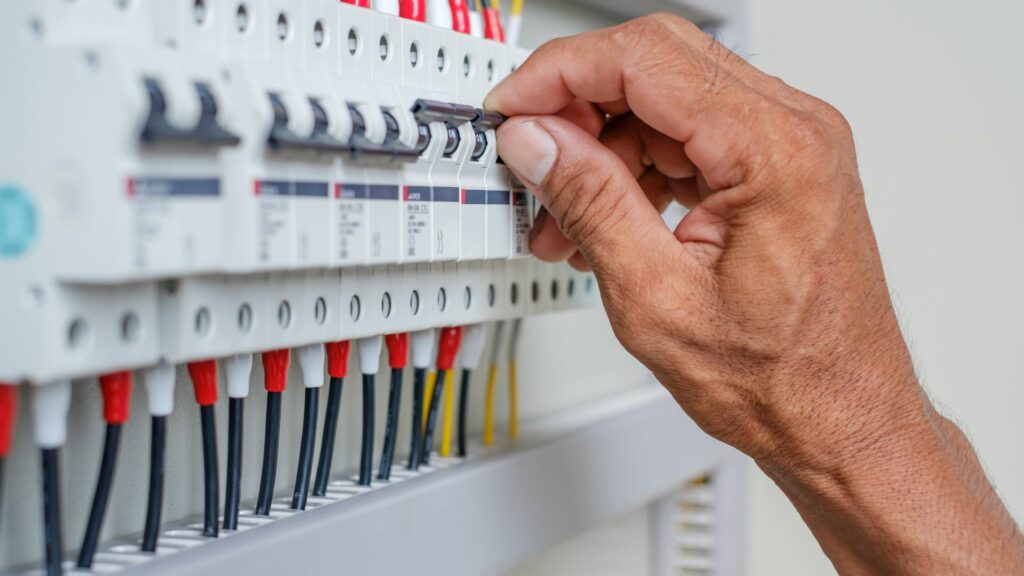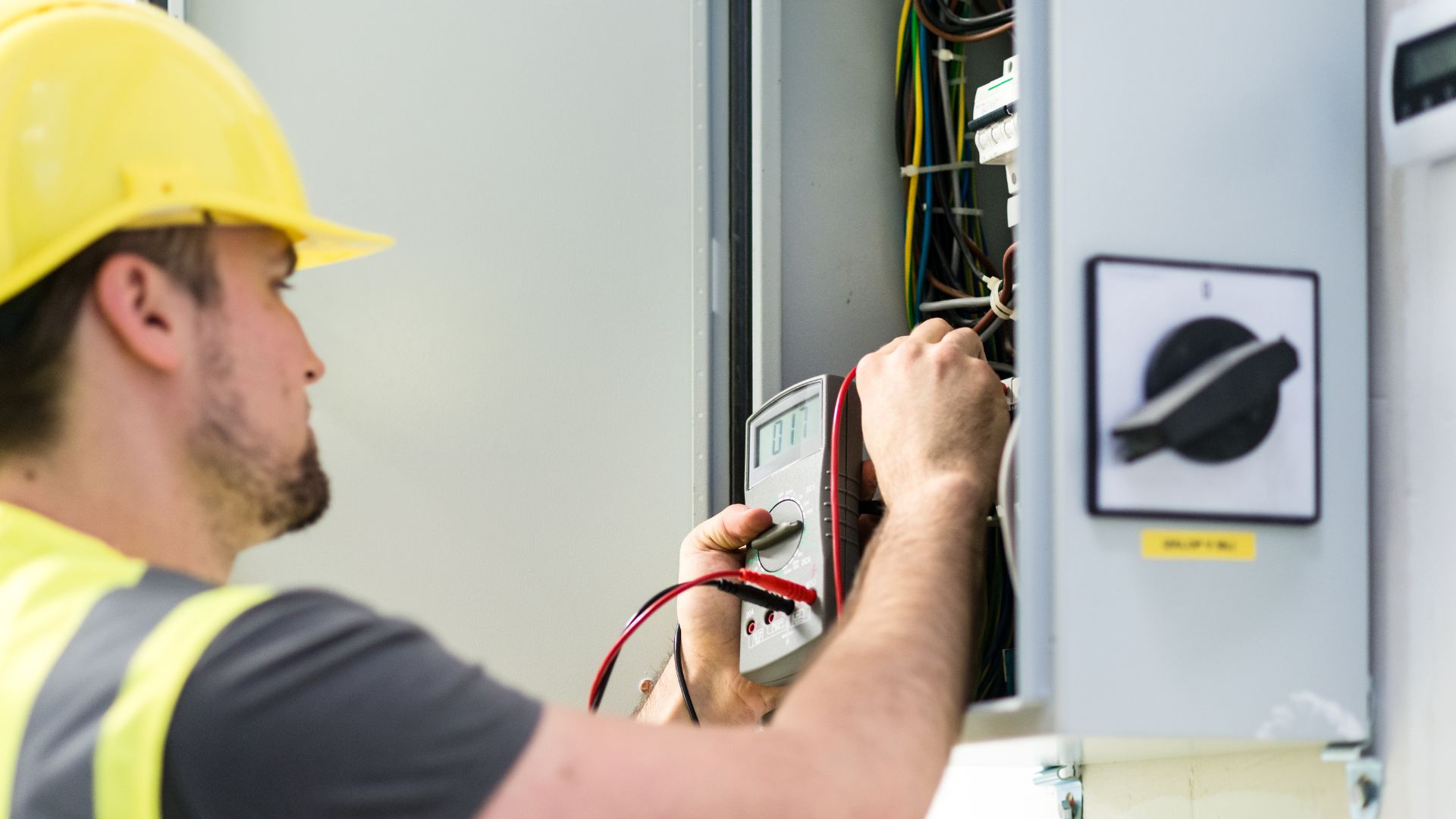If you just bought a 100 amp panel, the guide below will show you the correct size and number of breakers to install.
Can You Use 30, 50, 60 Amp Breaker In 100 Amp Panel?
Yes, you can use 30A, 50A, and 60A breakers in a 100-amp panel.
100A panels are risky. They can run small homes.
But you are better off upgrading to a 200A service, especially if you intend to accommodate various heavy-duty devices such as air conditioners and electric heaters. As far as the size of the individual breakers is concerned, try to consider the following:
1). Power from the grid enters your home through the service panel. The service panel distributes the current it receives to the appliances in the house via the branch circuits. The amp rating of a service panel tells you the maximum number of amps it can transmit.
2). When you select a circuit breaker, your biggest concern should be the load it will support. For instance, you cannot install a 30A breaker in a 100A panel when the load the breaker accommodates exceeds 30 amps.
The breaker will trip whenever you run the application. This is true for 50A and 60A circuit breakers.
3). The wiring is equally important. A 40A load on a 30A breaker is an inconvenience because the breaker will trip repeatedly. But it isn’t a threat to you unless the breaker fails to respond.
On the other hand, you may start a fire if you connect the breaker to the wrong wire size. For instance, you need 10AWG cabling to transmit 30 amps. 14AWG wiring will melt and ignite. You can’t proceed without confirming that the conductors feeding the 30A, 50A, and 60A breakers are correctly sized.
4). You are better off using a breaker with a smaller size than the panel’s amp rating. In the case of a 100A panel, any breaker 100 amps or smaller is permissible. There are exceptions. But generally speaking, breakers smaller than 100 amps are okay.
5). Placing multiple 30A, 50A, and 60A breakers in a 100 amp panel worries some people because they don’t want the total amperage of the breakers to exceed 100 amps. However, the total amperage of the breakers can either match or exceed the panel’s capacity.
This sounds like a bad idea, but it works because you won’t use all the circuits at the same time. And even if you do, you won’t use these branch circuits at their full capacity. Using a 30A, 50A, and 60A breaker at full capacity simultaneously will trip the master breaker.
This sounds like a mere inconvenience because it deprives all the other circuits of power. However, the breaker eventually wears out, especially if it trips repeatedly.
Some consumers take deliberate steps to prevent an overload by turning the loads on some circuits off before using others at full capacity. You are better off upgrading to a panel size that can accommodate the needs of all the circuits without tripping.
How Many 30, 50, 60 Amp Breakers In 100 Amp Panels?

You can use the following to make your decision:
1). Number of Slots
Each panel has a specific number of slots. Those slots will tell you the number of breakers the panel can accept. You can also contact the manufacturer to determine how many breakers their panels can support.
You can use this information to make a plan. For instance, you don’t have to keep all the breakers in the main panel. Many consumers install a subpanel once they run out of room in the main panel.
2). NEC Regulations
The NEC won’t limit the number of breakers you can add to a 100A panel. The NEC initially prohibited contractors from installing more than 42 breakers in an electrical panel.
But they eventually eliminated that clause. Today, the NEC expects homeowners to base their decision on the number of breakers the panel was designed to hold. For that reason, you shouldn’t hesitate to utilize the manufacturer’s guidance.
3). Manufacturer Designs
The manufacturer you select is vital. You can find electrical panels in various sizes. In fact, some panels are larger than others. They have more slots. Check the rating. Some people expect a 100A panel to support 20 breakers.
They don’t realize that 20/24 panels elevate that figure to 24 breakers. You can increase the number of circuits even further by introducing tandem breakers.
4). Number of 30A, 50A, and 60A breakers
You can install as many 30A, 50A, and 60A breakers as the panel will accommodate. There is no optimal number.
People ask this question because they don’t want the total breaker amperage to exceed the panel’s rating.
But the total breaker amperage can exceed the panel’s capacity without causing harm if you’re not using the circuits at full capacity simultaneously. If you make this mistake, the main breaker will trip. But that is not an excuse to routinely exceed the panel’s capacity.
This assumes that you have a main breaker. The NEC had a ‘six throw rule’ that compelled contractors to include a main breaker if the panel had more than six circuit breakers. But the NEC’s 2020 edition eliminated this rule. Check your local code. Find out what it has to say about this issue.
How To Determine What Size Breaker I Can Put In 100 Amp Panel?
This question has two sections that bleed into one another. You must answer the first section before moving on to the second one:
1). How To Determine The Breaker Size For Your Home
You base the breaker size on the load you want it to accommodate. This means adding the wattage of all your appliances together and turning that figure into amps.
The breaker size should exceed your load’s total amperage.
This assumes that a 100A panel is sufficient for your home’s needs. If the breaker size you selected is too big for the 100A panel, you should upgrade the panel.
2). How To Determine The Breaker Size For 100 Amp Panel
The breaker size shouldn’t exceed the panel’s capacity. If you do, the main breaker will trip. Keep the 80 percent rule in mind. If your chosen breaker exceeds the capacity of the panel, you need a new panel with a greater capacity.
You can’t settle for a smaller breaker size to accommodate the limitations of the panel if the breaker size is too small to support your needs.
What Is The Largest Breaker I Can Use In a 100 Amp Panel?
You can add a breaker of any size to a panel. 100-amp panels have breakers with a total amperage that exceeds 200 amps.
Using a 100 Amp Breaker In a 100 Amp Panel
You can add a 100A breaker to a 100A panel. No one needs a 100A breaker, not in a residential setting. Most homesteads have 15A and 20A circuits. But you can install a 100A breaker if you want. The only limitation is the panel. You can’t use a 100A breaker if the panel doesn’t accept it.
Using a 125 Amp Breaker In A 100 Amp Panel
Yes, you can install a 125A breaker in a 100 amp panel. You have some concerns. First of all, the 100A panel’s bus bars are probably rated for 100 amps. This isn’t always the case. The bus bars in many 100A panels are rated for 125 amps.
The second issue is the wiring. Make sure the cables can tolerate a 125A load. Fortunately, a 125A breaker doesn’t guarantee that you will use 125 amps. Even with the smaller bus bar and wiring, you can run your appliances without attracting negative consequences if the load doesn’t exceed the capacity of the panel. Most people don’t run their heavy-duty appliances simultaneously.
Using a 200 Amp Breaker In A 100 Amp Panel
Common sense will tell you to keep 200A breakers away from a 100A panel. You have various concerns, such as the rating of the bus bar and the gauge of the wiring. Some people have breakers whose total amperage exceeds the panel’s capacity significantly.
But even if you don’t intend to transmit 200 amps through the panel simultaneously, this pairing is risky. You should also find out whether the 100A panel can physically accommodate a 200A breaker.
Related post:

